The Lake District was transformed by the romantic movement and helped inspire some of the best-known arts and crafts artists. Wordsworth, Ruskin, Beatrix Potter and many others have loved this place and made it their home, and you can visit the places that inspired them.
There are also some fascinating Lake District museums and galleries to visit.
Designed by the famous architect M H Baillie-Scott and completed in 1900, this was a country retreat for a wealthy Manchester industrialist. It’s a perfect example of the ‘Arts and Crafts’ style fashionable at the time, on the cusp between Victorian and modern design. The stunning interior has survived more or less intact. Today, after restoration of the house and garden, Blackwell House and gardens are open to the public with period rooms and exhibition galleries.
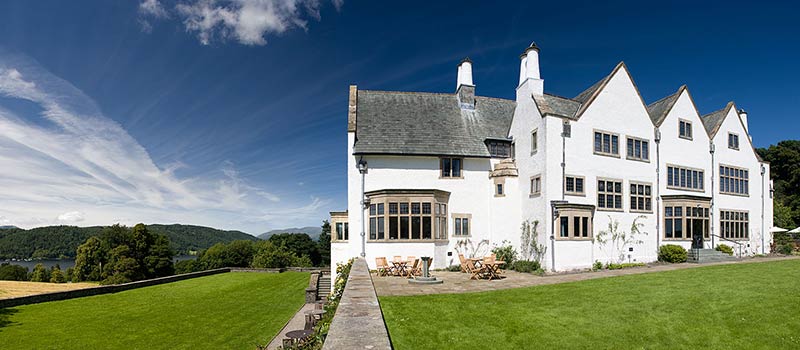
Location: South Western Lakes, near Windermere.
Grid ref SD400945. 2.5 kilometres (1.6 miles) south of Bowness-on- Windermere.
Muncaster has been owned by the Pennington family since the land was given to their ancestor Alan de Penitone in 1208. It’s grown from a medieval fortified tower-house or ‘pele’ tower, with many additions up to the late nineteenth century. Henry VI sought refuge here during the Wars of the Roses and left a glass drinking-bowl behind, saying if it remained unbroken the Penningtons would thrive. It’s still intact and is known as the ‘Luck of Muncaster’. Muncaster Castle and gardens are open to the public.
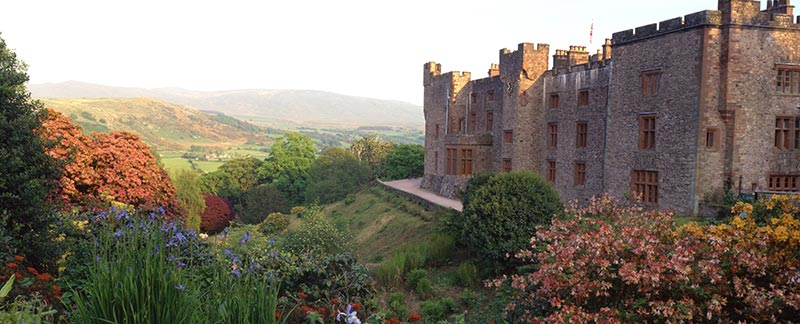
Location: Eastern Lakes, near Ravenglass.
Grid reference SD103963.2 kilometres (1.25 miles) east of Ravenglass, off A595.
Brantwood was the home of the Victorian intellectual John Ruskin. The house, gardens and estate host many of Ruskin's treasures, along with contemporary exhibitions, concerts, courses and special events.
In the grounds is a reconstructed hut, wth low, circular stone wall. These were huts where bark peelers lived in summer. Their job was to remove bark from oak trees, before the trees were coppiced, to supply local tanneries. Brantwood House and Gardens are open to the public.
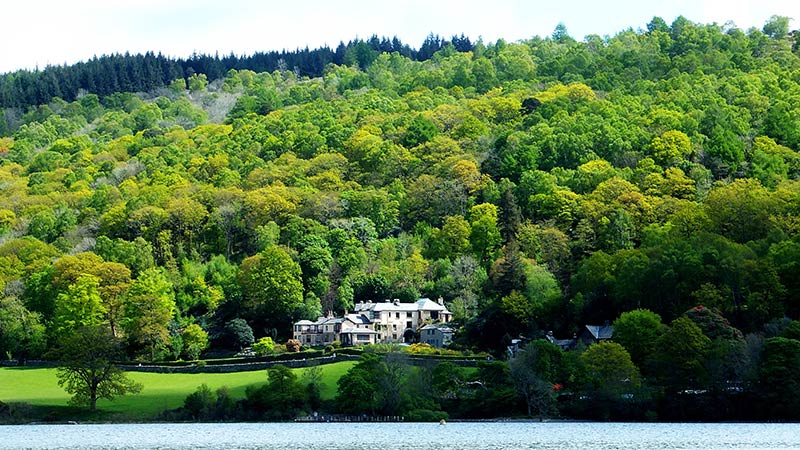
Location: South Westen Lake District, near Coniston.
Grid ref SD312958. Brantwood, 2 kilometres (1.2 miles) south east of Coniston or 4.5 kilometres (2.8 miles) south west of Hawkshead. You can also catch a boat to Brantwood jetty from Coniston Boating Centre.
Mirehouse has been a family home since 1688 when its original owner, the Earl of Derby, sold it to his local agent. It was once smaller, but has been added to over the centuries. Wordsworth and other famous poets were regular guests here. The Spedding family still live in the house which they inherited in 1802, and is open to visitors.
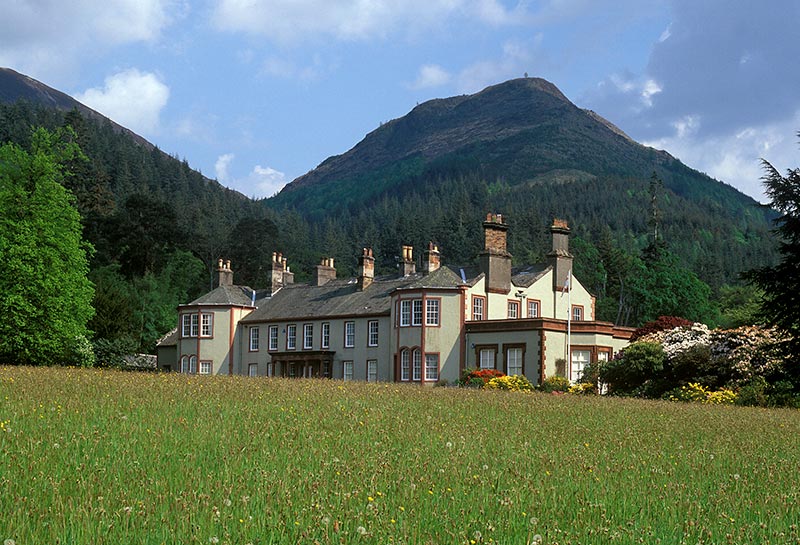
Location: Northern Lake Distirct, near Keswick.
Grid ref NY232283. On A591, 5 kilometres (3 miles) north of Keswick.
The Dalemain Estate includes a splendid house, gardens, a deer park and tenant farms. Documents tell us that a fortified ‘pele’ tower stood here in the twelfth century. A spiral staircase is all that survives of this early building. Dalemain became a manor house in Tudor times, and the Georgian façade was added in the mid-eighteenth century. It’s been the home of the Hasell family since 1680. Dalemain house and garden are open to visitors and is on the route of the Ullswater Way
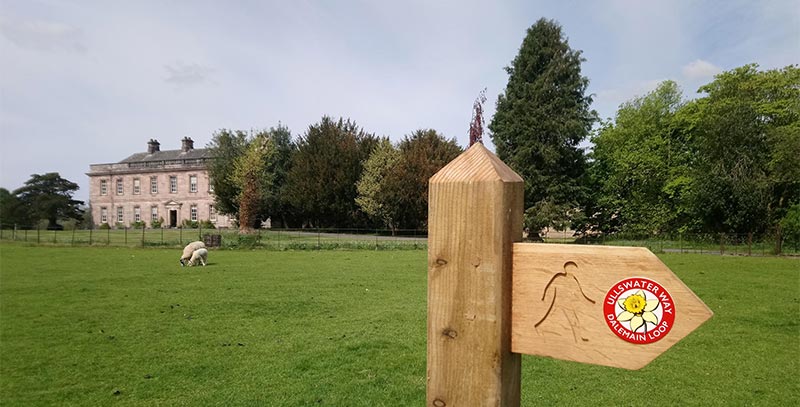
Location: Northern Lake District, near Penrith and Ullswater.
Grid ref NY477268. Off A592, 5 kilometres (3 miles) south west of Penrith.
The farmhouse made famous by the vegetable patch that tempted Peter Rabbit. The house lets you see how Beatrix Potter lived, and her love of the Lake District. It also showcases some of the many 1000's of objects and letters that Beatrix collected over her life. Managed by the National Trust.
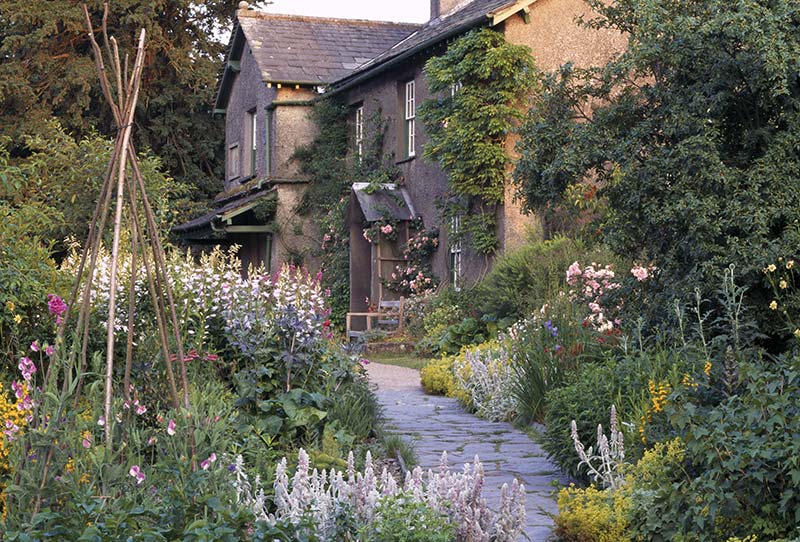
Location: Central Lake District, Hawkshead
Near Sawrey, Hawkshead, Ambleside, Cumbria, LA22 0LF
This perfectly preserved seventeenth century house gives you a glimpse into the life of a comfortably-off farming family. It was built in 1650 for George Browne, a newly-married ‘statesman’ farmer, whose family continued to live here for over 300 years. The house was extended in the late 1600s, but has hardly changed since that time. It includes some beautiful carved furniture made for the Brownes. Townend is run by the National Trust and is open to visitors.
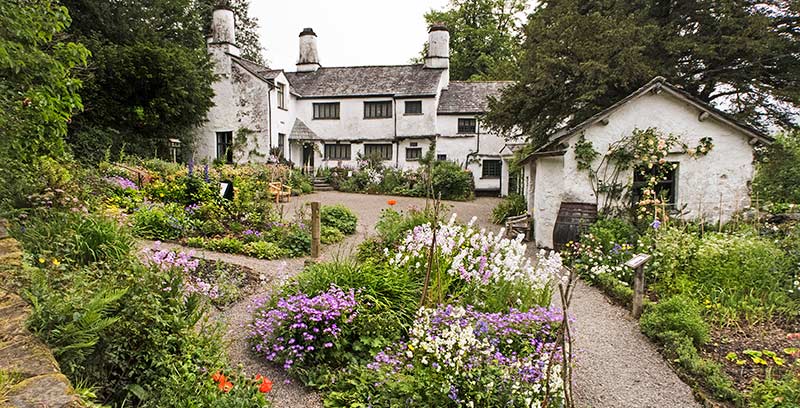
Location: South Westen Lake District, near Windermere.
Grid ref NY406020. Troutbeck, 3.5 kilometres (2.2 miles) north of Windermere.
Built at the turn of the 19th century, on the site of two previous houses, Lowther Castle had beautiful gardens and a large estate. But in 1957 the castle was demolished. It was left derelict for over 70 years, before an innovative and intriguing renovation have made it into an award winning visitor attraction. Shop, cafés, free car parking and cycle hire make this a full day out. Lowther Castle is also on a loop of the Ullswater Way walking route.
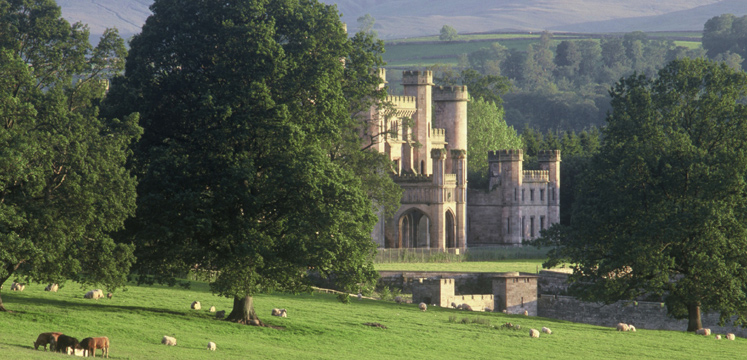
Location: North Lake District, near Penrith.
Sat nav postcode: CA10 2HH
Originally built by the Strickland family in c.1350, and then extended to become a grand Elizabethan residence, the Strickland family are still in residence. It houses an important collection of extremely rare carved oak furniture from the Elizabethan period along with portraits of the family through the years, managed by the National Trust parts of the castle and the gardens are open to visitors.
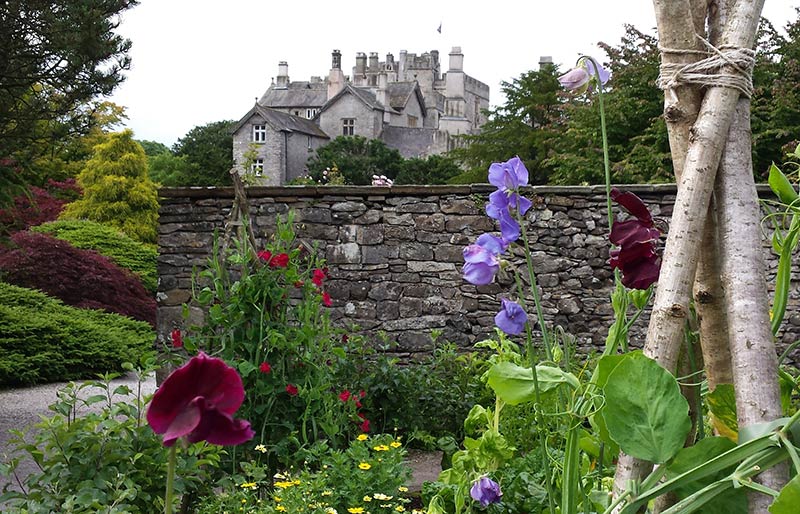
Location: South Lake District, near Kendal.
Sat nav postcode: LA8 8DZ
Rydal Mount dates from the 16th Centuary and was William Wordsworth’s best loved family home from 1813 to his death in 1850 at the age of 80. The house continues to be owned by the Wordsworth family and retains the feel of a lived in family home, along with a 5 acre garden still in keeping with how William Wordsworth designed it. Rydal Mount has glorious views of Windermere, Rydal Water and the surrounding fells. Rydal Mount and gardens are open to visitors, but check opening dates before visiting.
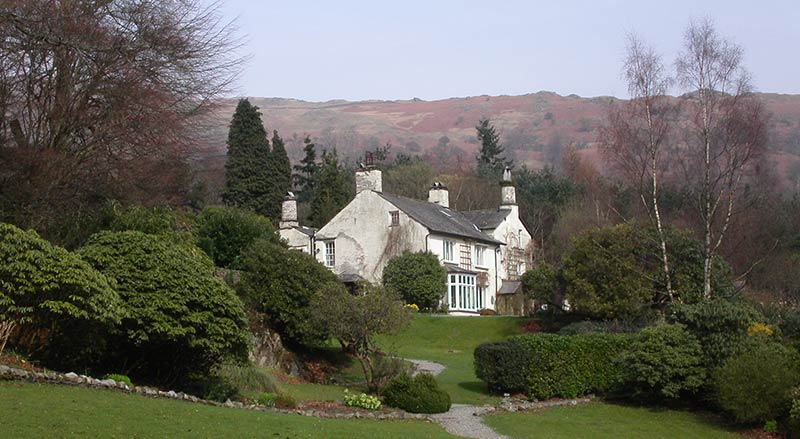
Location: Central Lake District, between Ambleside and Grasmere.
Sat nav postcode: LA22 9LU
People lived in this farmstead between 1686 and 1771, but by the early nineteenth century it was a ruin. Today you can make out the farmhouse, barns, sheep pens and old field boundaries. The name has Norse origins. Gait means ‘goat’ and scale means ‘shieling’ or seasonal house. This suggests there was a settlement here long before the seventeenth century. Managed by the National Trust, the ruins are free to visit.
Location: Central Lake District, near Ambleside.
Grid ref NY255022. 12 kilometres (7.5 miles) west of Ambleside, between Wrynose Pass and Cockley Beck. Limited roadside parking 1.3 kilometres (0.8 miles) west of the pass, then footpath west for 1 kilometre (0.6 mile).
These lonely ruins are the remains of the once-powerful Shap Abbey. Built around 1200, it housed a thriving monastic community. The church, chapter-house and living areas were grouped around a square cloister. Outside are traces of guest rooms, stables, workshops and the Abbey mill. Henry VIII closed the Abbey in 1540 and it slowly decayed. Some of its stone was used to build Shap Market Hall. Managed by English Heritage, Shap Abbey is free to visit.

Location: Western Lake District, near Shap.
Grid ref NY548153. Off A6, 1 kilometre (0.6 mile) west of Shap.
Stone cross fragments, massive re-used building blocks, and finds from an excavation in the 1980s all suggest there was a monastery here in Anglo-Saxon times. Also the Venerable Bede, writing in 700 AD, refers to a monastery ‘near the river Dacore, from which it took its name’. Look for the cross fragments in the twelfth century parish church, built on the same site.
Location: North Lake District, near Penrith.
Grid reference NY460266. On minor road off A66, 9 kilometres (5.6 miles) south west of Penrith. Limited parking in Dacre.
This unique Viking cross shows a radical approach to religion. It’s carved with a crucifixion scene and images from Norse mythology, linking the two belief systems. Standing 4.5 metres (15 feet) high, it’s the tallest Viking cross in England. Inside the church are other Viking fragments: two more crosses, two tomb covers and a decorated stone. It’s likely that this was an important site for Christianity in the ninth and tenth centuries.
Location: Western Lake District, near Gosforth.
Grid reference NY072035. St Mary’s Church, Gosforth, just off A595.

Created with support from the Heritage Lottery Fund